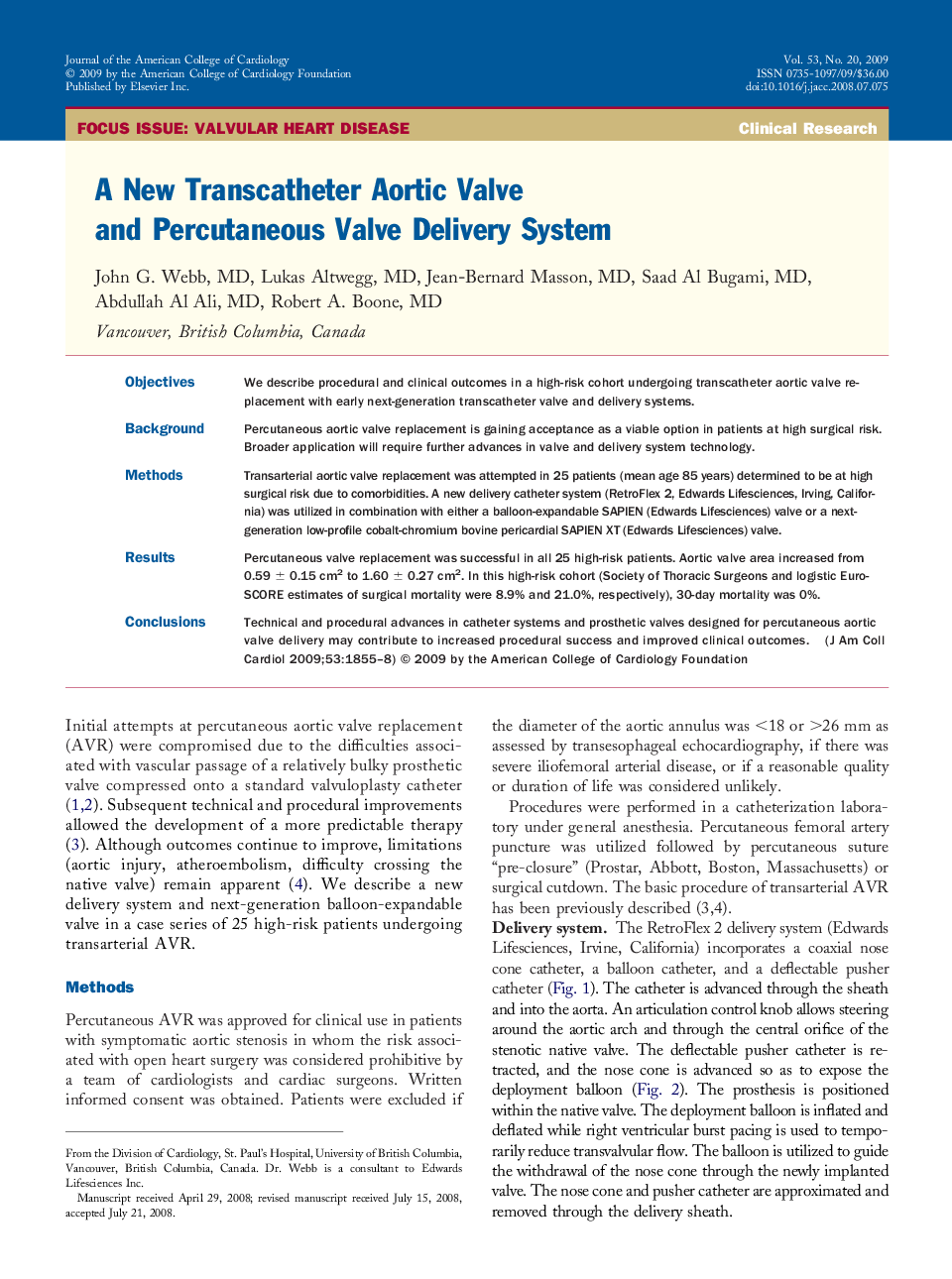| Article ID | Journal | Published Year | Pages | File Type |
|---|---|---|---|---|
| 2951401 | Journal of the American College of Cardiology | 2009 | 4 Pages |
ObjectivesWe describe procedural and clinical outcomes in a high-risk cohort undergoing transcatheter aortic valve replacement with early next-generation transcatheter valve and delivery systems.BackgroundPercutaneous aortic valve replacement is gaining acceptance as a viable option in patients at high surgical risk. Broader application will require further advances in valve and delivery system technology.MethodsTransarterial aortic valve replacement was attempted in 25 patients (mean age 85 years) determined to be at high surgical risk due to comorbidities. A new delivery catheter system (RetroFlex 2, Edwards Lifesciences, Irving, California) was utilized in combination with either a balloon-expandable SAPIEN (Edwards Lifesciences) valve or a next-generation low-profile cobalt-chromium bovine pericardial SAPIEN XT (Edwards Lifesciences) valve.ResultsPercutaneous valve replacement was successful in all 25 high-risk patients. Aortic valve area increased from 0.59 ± 0.15 cm2to 1.60 ± 0.27 cm2. In this high-risk cohort (Society of Thoracic Surgeons and logistic EuroSCORE estimates of surgical mortality were 8.9% and 21.0%, respectively), 30-day mortality was 0%.ConclusionsTechnical and procedural advances in catheter systems and prosthetic valves designed for percutaneous aortic valve delivery may contribute to increased procedural success and improved clinical outcomes.
